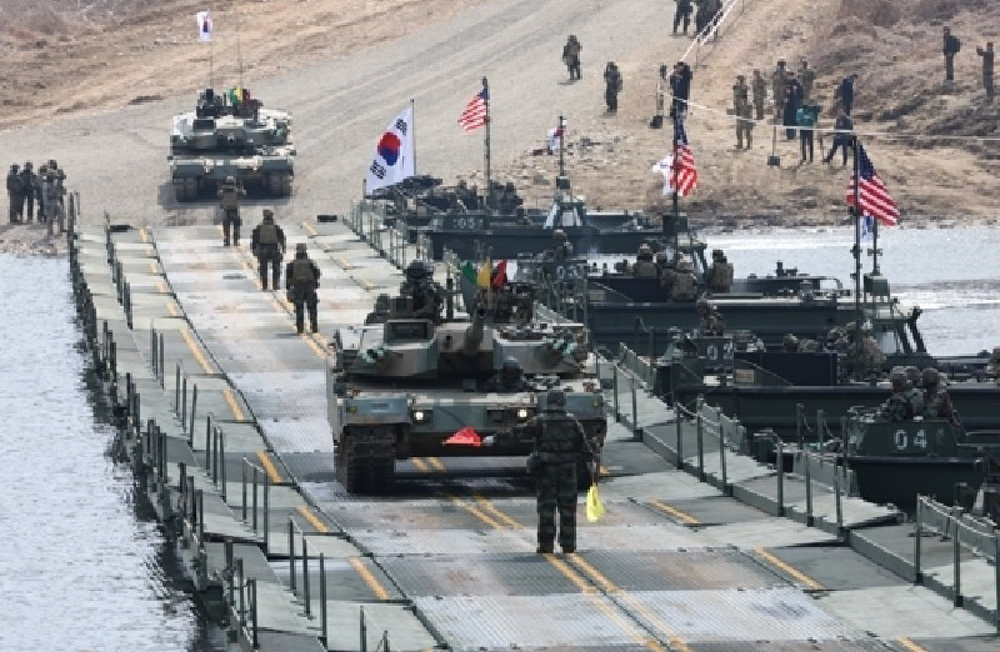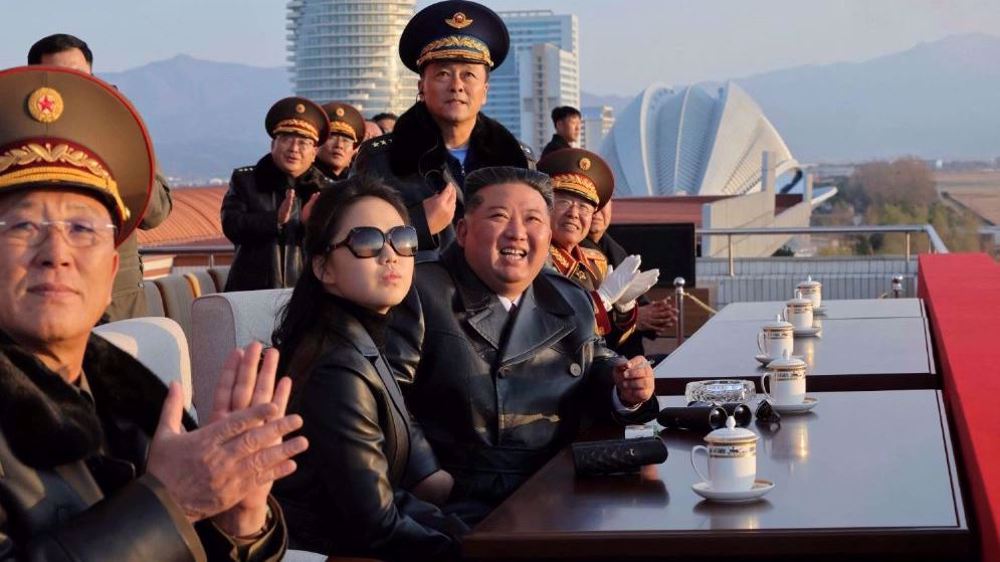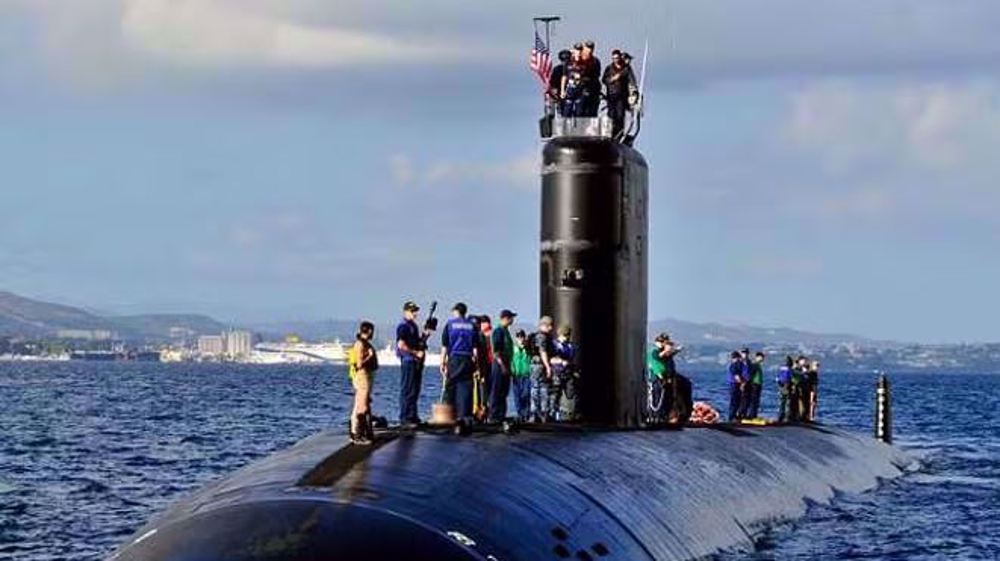S Korea holds naval drills amid reports of new ICBM activity by North
The South Korean military has carried out live-fire naval war games in waters off the country’s eastern coastline a day after staging ground and air force drills in response to the North’s recent hydrogen bomb test.
The South’s Defense Ministry announced on Tuesday that its warships, including a 2,500-ton frigate, a 1000-ton patrol ship and 400-ton guided-missile vessels, took part in the naval maneuvers in the face of what it referred to as potential provocations by Pyongyang following its Sunday nuclear test.
The ministry further stated that more naval drills are due to take place in waters south of the Korean Peninsula from Wednesday to Saturday this week.
On Monday, the South Korean army and air force troops conducted joint war games, involving F-15 jetfighters and land-based ballistic missiles, simulating an assault on the North’s main nuclear site.
Seoul said the military exercises were intended to “strongly warn” Pyongyang over its sixth and most powerful nuclear test so far.
There will also be a joint anti-submarine warfare exercise with the US this month, according to Seoul.

Meanwhile, a South Korean news outlet cited an unnamed intelligence source as saying on Tuesday that North Korea was observed moving what looked like an intercontinental ballistic missile (ICBM) towards its western coastline.
“The rocket started moving on Monday … and was spotted moving at night to avoid surveillance,” Asia Business Daily reported, citing the intelligence source, noting that the North maintains launch facilities for its missile program on its western coast.
Seoul’s Defense Ministry, however, said it was unable to confirm the report, which came a day after defense officials stated they had detected signs that Pyongyang was getting ready for another missile test, possibly an ICBM launch.
On the weekend, North Korea sparked fury and alarm across the international community by detonating what it said was a hydrogen bomb. According to international seismic agencies, the test created an artificial 6.3-magnitude earthquake.
Seoul’s defense officials told a parliament session on Monday the nuclear test had an estimated strength of 50 kilotons, making it five times the size of its previous test in September 2016. The bomb was also some three times more powerful than the US device that destroyed Hiroshima in 1945, according to the officials.
South Korean Defense Minister Song Young-moo told the parliament hearing that during his recent talks with his US counterpart, Jim Mattis, he had raised the issue of a possible re-deployment of Washington’s “strategic assets” such as aircraft carriers, nuclear submarines and B-52 bombers to South Korea.
“I told him that it would be good for strategic assets to be sent regularly to the Korean Peninsula and that some South Korean lawmakers and media are strongly pushing for tactical nuclear weapons [to be redeployed],” Song said.

The minister also said that the US military would seek to dispatch a nuclear-powered aircraft carrier to the waters off the Korean Peninsula, while four additional launchers of the American THAAD missile system would join the two earlier deployed south of Seoul.
The two sides have also also agreed after talks to drop the limit on a warhead weight for the South’s missiles, which are currently capped at 500 kilograms (1,100lb).
Commenting on the test, the director general of the International Atomic Energy Agency (IAEA), Yukiya Amano, stated on Monday that North Korea’s claim of testing a hydrogen bomb represents a “new dimension of threat.”
“I think the North Korean threat is a global one now. In the past people believed it was a regional one, that’s no longer the case,” Amano said during an interview with the CNN.
Amano, however, said that he could not determine whether the explosion claimed by the North came from a hydrogen bomb, but that the test’s bigger yield means “it is safe to assume North Korea is making significant progress.”
He also expressed concern that “North Korea is one of the countries where it's most difficult to guess their next step.”
Meanwhile, the European Union’s Foreign Policy Chief Federica Mogherini emphasized on Monday that North Korea was “playing with fire.”
“The path undertaken by North Korea is dangerous, irresponsible and illegal. They are playing with fire and the flames could rapidly spread to the entire region and the whole world,” she said.
Mogherini vowed that the EU is prepared to back new and tougher sanctions against Pyongyang by the UN Security Council (UNSC) and to implement them immediately and fully.
She further underlined the EU’s position that there was no military solution to the crisis and, instead, urged maximum economic and diplomatic pressure on the North.
The development came as the UNSC held yet another emergency session over North Korea on Monday, where US Ambassador Nikki Haley insisted that Pyongyang’s actions show it is “begging for war,” further calling for adoption of the harshest diplomatic measures against the North.
Maccabi Tel Aviv fans chant hate, make Nazi gestures during football match
Israeli airstrikes hit southern Lebanon amid ongoing ceasefire violations
VIDEO | Fourteen Palestinians, including kids, die in Gaza amid freezing temperatures
Putin’s visit to India reinforces Moscow-Delhi ties amid US sanctions, pressures
Discover Iran: Ashuradeh, Iran's only Caspian Sea island and sanctuary for birds, wildlife
VIDEO | Top documentarians gather for 19th Cinema Verite in Tehran
Press TV's news headlines
VIDEO | Karachi hosts Iran trade exhibition to boost economic ties













 This makes it easy to access the Press TV website
This makes it easy to access the Press TV website